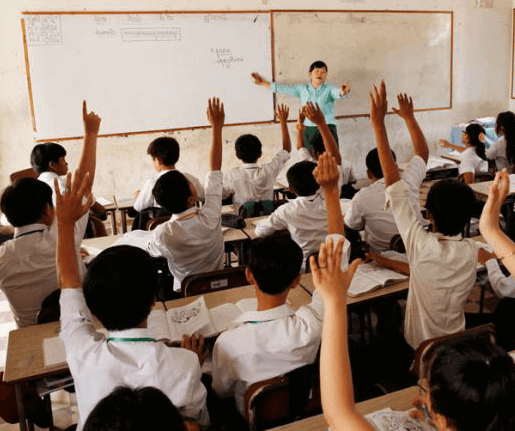NLP in Education

As an educator, have you ever thought about how you can easily motivate your students, improving their engagement and participation in class?
Have you ever thought about how you can build a stronger rapport with your students, creating a bond that makes learning a pleasant journey?
Have you ever considered how, as a teacher with keen observation skills, you can easily identify your students’ learning patterns, enabling you to adapt your teaching methods more effectively?
Here’s a simple introduction to NLP, which may help you achieve greater breakthroughs in teaching!
NLP, or Neuro-Linguistic Programming, is a modern psychological approach developed in the 1970s by Dr. Richard Bandler and Dr. John Grinder. It involves understanding our thinking patterns, behaviors, and language, combined with strategies, modeling, and communication skills, which can bring positive changes to our lives.
In addition to its therapeutic applications, NLP is now widely used in business fields (NLP in business applications), such as helping us build better interpersonal relationships, cultivate exceptional leadership skills, eliminate negative thoughts, and strengthen our mental state. For example, it can help someone progress from a lack of confidence in public speaking to achieving excellent performance.
In recent years, NLP has also been applied in the education/teaching sector (NLP in education/teaching applications), as it helps tailor effective learning methods to enhance students’ learning efficiency.

Howard Gardner, a psychological development expert from the Harvard Graduate School of Education, believes that our previous definition of intelligence was too narrow and did not truly reflect a person’s abilities. In 1983, in his book Frames of Mind: The Theory of Multiple Intelligences, he introduced the Theory of Multiple Intelligences. In this theory, learning styles can be broadly divided into three main categories:
- Visual learning
- Auditory learning
- Kinesthetic learning
This aligns perfectly with the NLP focus on visual, auditory, and kinesthetic representational systems.
Visual learning refers to a learning style primarily based on visual elements. In the classroom, instructors can offer more visually-oriented teaching methods, such as providing colorful images, charts, videos, exhibits, and more.
For auditory learning, instructors should speak clearly and explain with examples, ensuring clarity and emphasis.
Kinesthetic learning involves engaging students in hands-on activities. For instance, conducting experiments or interactive exercises allows students to participate actively.

Nowadays, more and more educators who have learned NLP are applying it in classrooms, offering more effective teaching methods for students with different learning styles, such as visual, auditory, and kinesthetic. Some universities have even incorporated NLP into their curriculum.
Furthermore, NLP techniques help educators handle various situations. Educational psychologists have demonstrated that NLP can improve students’ performance, boosting their learning, confidence, and overall results.
NLP can also help remove students’ anxieties. For example, some students may become ill before exams, experiencing symptoms like dizziness or even vomiting. These issues could be influenced by psychological factors.

Are you ready to become an excellent and effective educator? The above brief introduction to NLP is hoped to be helpful to you. I hope NLP will bring you greater progress in your teaching, and allow you to achieve greater success and improvement in both your work and life!
